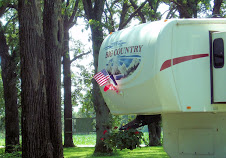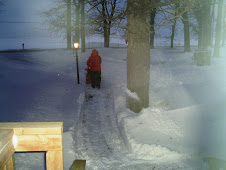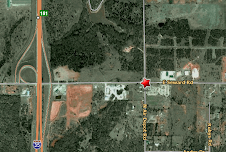 Inspired by the success of the east to west (New York City to San Francisco) Lincoln Highway, the Jefferson Highway stretched from Winnipeg, Canada down to New Orleans, winding thru “The Louisiana Purchase.” Named after the third president, Jefferson, in office when the Louisiana Purchase was brought into the US, it was built as part of the National Auto Trail system (1910).
Inspired by the success of the east to west (New York City to San Francisco) Lincoln Highway, the Jefferson Highway stretched from Winnipeg, Canada down to New Orleans, winding thru “The Louisiana Purchase.” Named after the third president, Jefferson, in office when the Louisiana Purchase was brought into the US, it was built as part of the National Auto Trail system (1910).
Citizens from Winnipeg convinced the Americans to make the northern point of the route at their city. Nicknamed the “Pine to Palm Highway” for the trees found at either end, it wandered its way from Canada, to the intersection of St. Charles Avenue and Common Street, New Orleans, Louisiana. A marker remains there to this day. The first route went through Oklahoma and Texas. Later a more direct route through Arkansas was paved.
Since 1926, the north-south highway has been US 65, but it was first known as the Interstate Trail (1911-1915) and then as the Jefferson Highway (1915-1926). . Most of the roadway/route still exists today. You can travel the entire 2300 miles and still be in the same time zone! It roughly parallels Interstate 35.
A better map with towns listed can be found at http://www.jeffersonhighway.org/
The Reed-Niland Corner sits at the intersection of the original 1913 Transcontinental Highway (Lincoln Highway) and the 1915 Jefferson Highway. From 1921 until 1938 the highway turned west at a section of property owned by the Reed and Niland families and joined the Lincoln Highway for 15 miles into Ames, IA. The curved connection to the Lincoln Highway formed a “Y” that became the site of Reed-Niland One-Stop Corner. It is one of the most intact and best preserved commercial "one-stop" sites on the Lincoln Highway.
Charlie Reed built a gas station at the intersection in the early 1920s. At first called the Lincoln and Jefferson Service Station and later as Reed's Standard Service Station.
Although they did not provide mechanical services, motorists could buy gasoline, oil, tires, batteries, cigarettes, cigars, soda pop, and candy. Until the late 1940s, they could have motor oil changed and tires repaired. The station was open around the clock and was a stop for the Greyhound and Jefferson intercity bus lines. It closed in 1967. Today the building is a museum.
 Food service at Reed-Niland corner also began in the 1920s with a lunch stand selling sandwiches and cold drinks during the summer. It was replaced by a small café and by the late 1930s, its name had been changed from the L & J (Lincoln and Jefferson) Cafe to Niland's Cafe. The classic roadside café, complete with neon “EAT” signs and open long hours, specialized in ‘home style’ cooking.
Food service at Reed-Niland corner also began in the 1920s with a lunch stand selling sandwiches and cold drinks during the summer. It was replaced by a small café and by the late 1930s, its name had been changed from the L & J (Lincoln and Jefferson) Cafe to Niland's Cafe. The classic roadside café, complete with neon “EAT” signs and open long hours, specialized in ‘home style’ cooking. The Colo Cabin Camp (later replaced with the Colo Motel) began in 1928 with 6 cabins and grew to a 12 cabin camp. Open from early May into October, the cabins were furnished with a bed, a table, two wooden chairs, and a single light hanging from the ceiling. When travelers checked in, they were handed clean sheets, blankets, pillows and towels. None of the cabins had bathroom or shower. Only two of the cabins were heated with pot-bellied stoves that burned coal or cobs. .
Most of the cabins were demolished for the motel building, completed in 1947. Several years later, 2 surviving cabins were joined together and remodeled. The only other remnant of the cabin camp is the building which once housed the camp's laundry room and communal showers and toilets. Note the threshold inscriptions "Ladies" and "Men.”
 The Colo Motel included a small 2-unit building used mainly during peak demand during the summer and the 5 unit building constructed in 1948. Even after the main motel building was converted to an apartment building, these five units continued to be rented to travelers until 1995.
The Colo Motel included a small 2-unit building used mainly during peak demand during the summer and the 5 unit building constructed in 1948. Even after the main motel building was converted to an apartment building, these five units continued to be rented to travelers until 1995.
In 1948 a unit rented for $2.50 a night. The up-to-date features included heat, toilet and shower, 1 or 2 double beds and a radio. Air conditioning was installed in the early 1950s and by the middle of the ‘50s, each room had a TV set.
Relatives Charlie Reed and the Niland families have operated the business that provided gas, food and lodging to travelers along the highways since the 1920s.




















1 comment:
Hello, I've been looking through the weblog a pair of times and basically needed to say that the way with phrases is best notch. All the best.
motel in ia
motels in cherokee
Post a Comment